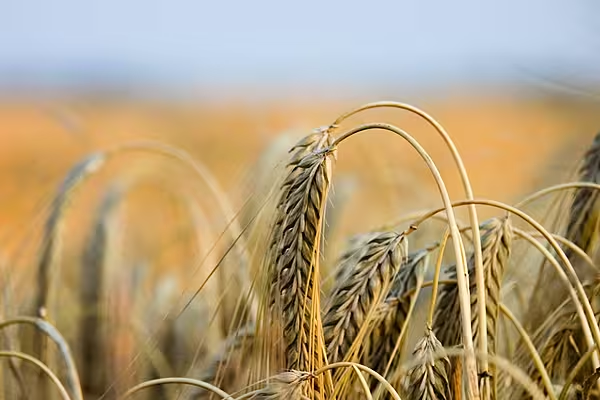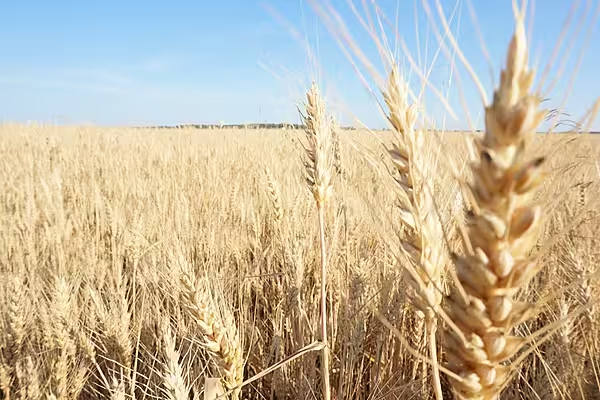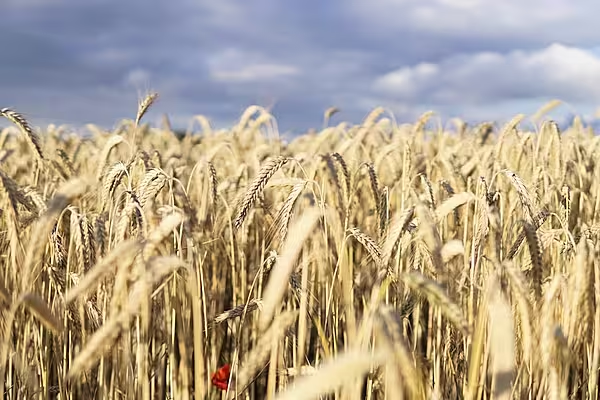Scorching temperatures have devastated wheat fields across northern Europe while a combination of dry conditions and extreme rain in the Black Sea bread basket have sunk output estimates, with fears of further damage causing prices to soar.
As harvesting heads north in Germany, the European Union's second largest wheat producer behind France, more evidence of serious damage to crops is emerging - prompting observers to cut crop estimates repeatedly for the 28-member bloc.
Catastrophic Situation
"The situation is catastrophic in northern Europe," Strategie Grains head analyst Andree Defois said.
The consultancy last week cut its forecast for this year's soft wheat harvest in the EU, collectively the world's largest wheat grower, below 130 million tonnes, a six-year low, and Defois said it could revise the estimate again.
France, the EU's top producer, also experienced extreme weather, prompting forecasters to cut their crop estimates to around 34 million tonnes from 36.6 million harvested last year.
Sweltering heat also dented wheat in Scandinavia and other Baltic states with Sweden's wheat crop seen falling 40 percent on the year.
And in Britain, where drought-hit wheat crops are expected to fall to a five-year low, farmers were anxiously awaiting results as the harvest moved north.
Memories of 2007/08
European wheat prices have surged 15 percent in the past three weeks, hitting their highest since late 2014 on Wednesday at 208.50 euros ($243.50) per tonne as worries mounted about global wheat supplies.
A bottom line impact is also being felt globally, with overall output seen falling to five-year lows, the International Grains Council said last week after lowering its forecasts for the EU's top four producers, France, Germany, Britain and Poland.]
The wheat market rally is reviving memories of the 2007/08 season when surging grain prices prompted a food crisis. But analysts say high stocks and other grain crops could compensate for part of the shortfall.
"World wheat prices are a "Powder Keg" looking for a match," AgResource analyst Dan Basse said on Twitter.
A further rally in wheat could eventually inflate consumer prices, said Abdolreza Abbassian, chief economist at the United Nations' Food and Agriculture Organisation (FAO).
However, overall impact should be curbed by reasonable stocks from a hefty 2017 harvest.
Country By Country
Germany's wheat crop, wilted by the highest May temperatures since 1881, is expected to shrink 25 percent this year, farmers association DBV said.
The magnitude of damage could see Germany, traditionally one of Europe's largest wheat exporters, needing wheat imports in the coming year. It has also led to calls from the DBV for around 1 billion euros in drought aid.
Crops were not as badly hit in France, where harvesting had already started as the heatwave hit.
French wheat exporters are now seen as the main beneficiary of their neighbour's weather woes while U.S. farmers could also benefit - potentially toppling Russia as the world's leading exporter, analysts said.
In the Black Sea region, crops have been hurt by both dry weather and pouring rain, hitting grain quality.
Quality concerns are key in Russia, as it means less wheat of milling or bread-making quality to offer on world markets.
"It is basically clear that the harvest will not reach the last year's record but it is still going to be relatively large," said Arkady Zlochevsky, head of the Russian Grain Union.
"The problem is mostly related to the quality."
Eastern Europe
Strategie Grains sees the Russian wheat harvest falling 18 percent this year, Defois said. Russia harvested a record 85.7 million tonnes wheat crop in 2017, durum wheat included.
In neighbouring Ukraine which exports the vast majority of its output, the wheat crop was seen falling up to 16 percent to 22-23 million tonnes after a spring drought and torrential rains in summer, the country's farm minister said.
Output in Romania, the EU's third largest wheat exporter, should fall at least 20 percent on the year, Laurentiu Baciu, President of the farmers association LAPAR said, with large swathes of the crop completely damaged.
"Output drops could be even bigger than that, day by day that percentage is increasing and situation in the field is degrading," he said. "Rains have not stopped for a single day."
News by Reuters, edited by ESM. Click subscribe to sign up to ESM: European Supermarket Magazine.














